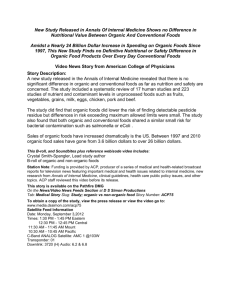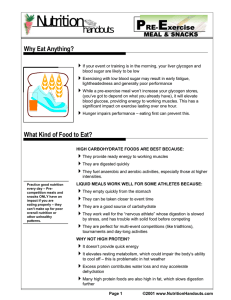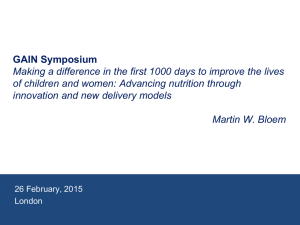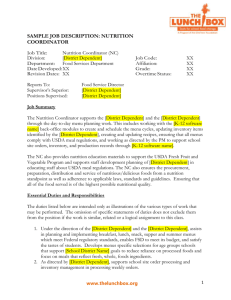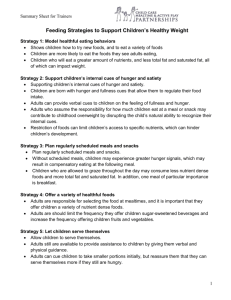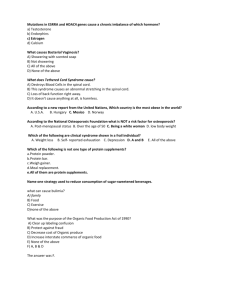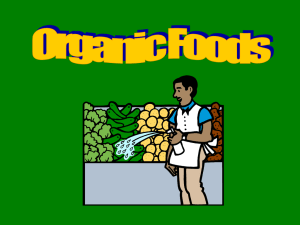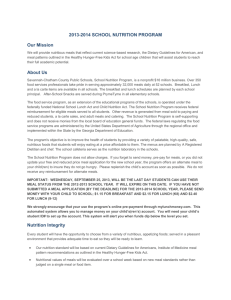Omnivores Project
advertisement
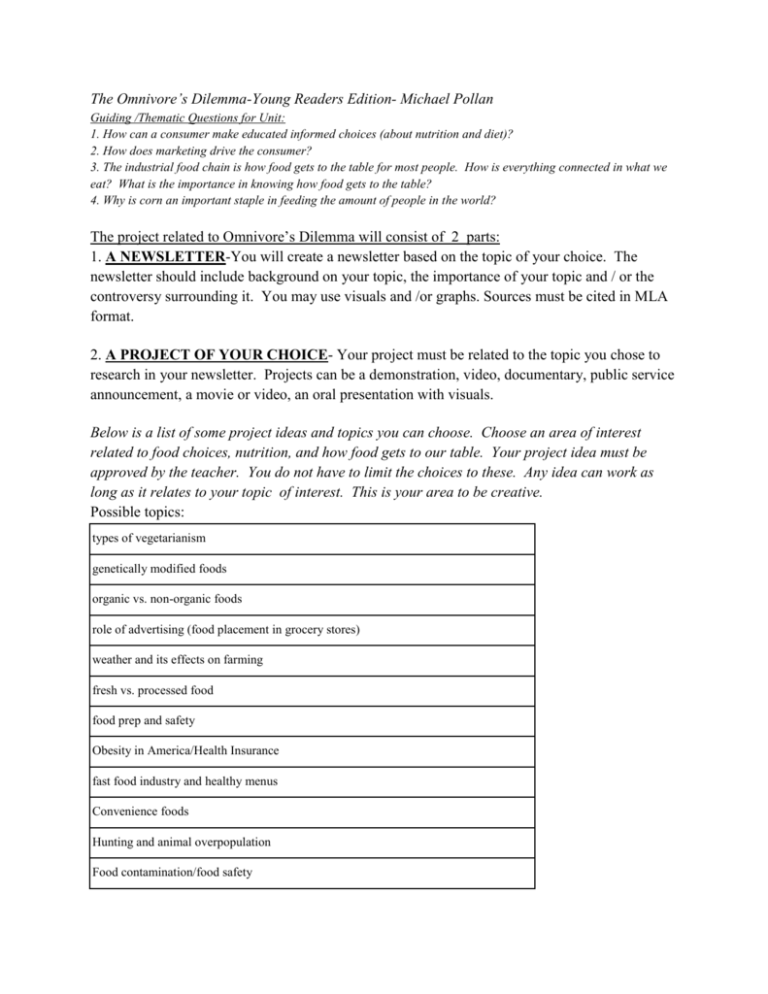
The Omnivore’s Dilemma-Young Readers Edition- Michael Pollan Guiding /Thematic Questions for Unit: 1. How can a consumer make educated informed choices (about nutrition and diet)? 2. How does marketing drive the consumer? 3. The industrial food chain is how food gets to the table for most people. How is everything connected in what we eat? What is the importance in knowing how food gets to the table? 4. Why is corn an important staple in feeding the amount of people in the world? The project related to Omnivore’s Dilemma will consist of 2 parts: 1. A NEWSLETTER-You will create a newsletter based on the topic of your choice. The newsletter should include background on your topic, the importance of your topic and / or the controversy surrounding it. You may use visuals and /or graphs. Sources must be cited in MLA format. 2. A PROJECT OF YOUR CHOICE- Your project must be related to the topic you chose to research in your newsletter. Projects can be a demonstration, video, documentary, public service announcement, a movie or video, an oral presentation with visuals. Below is a list of some project ideas and topics you can choose. Choose an area of interest related to food choices, nutrition, and how food gets to our table. Your project idea must be approved by the teacher. You do not have to limit the choices to these. Any idea can work as long as it relates to your topic of interest. This is your area to be creative. Possible topics: types of vegetarianism genetically modified foods organic vs. non-organic foods role of advertising (food placement in grocery stores) weather and its effects on farming fresh vs. processed food food prep and safety Obesity in America/Health Insurance fast food industry and healthy menus Convenience foods Hunting and animal overpopulation Food contamination/food safety Insecticide sprays vs organic treatment of palnts Menu choices...should restaurants have to provide vegan/vegetarian menus? Overfishing Greenhouse gases/pollution Food additives Balancing a diet between carbs, fats, proteins, and sugars Project ideas: 1. Organic gardening (research organic gardening and give a presentation to the class include the difference in cost in planning an organic vs non-organic meal). 2. Making two menus. Comparing making it fresh and the processed version. How much does it cost? What is the time it takes to make? What are the nutrition facts? How does it affect labor? 3. Weather and farming- research the effects on weather and the cost to farmers and the consumer. Interview a local farmer. 4. Create a public service announcement or commercial about food choices. Plan to upload your psa to the Morning Show. You will be evaluated on how CREATIVELY and TO WHAT EXTENT you include the information from the book into your product. 5. Advertising techniques used by food companies- can also interview a local food manager to find out how food is placed on grocery shelves. Where does it catch the consumer’s eye? How is a local food store laid out? 6. Presenting opposing viewpoints of genetically modified foods or any other controversial topic Choose a side and defend it. This can be an oral presentation (speech with visuals)A good resource is the Hunterdon database titled “Points of View”. 7. Food safety and preparation. Prepare a documentary on food safety and preparation. 8. Healthy options at fast food places. Investigate the history of fast food industry and the movement toward healthier options. Compare the nutritional value of several healthy meal choices on fast food menus. Design your own fast food item for a fast food place. 9. Make a meal using processed foods vs. homemade. Chart the cost, time, nutrition, and taste. You can use pictures, poster, videos etc. The Hunterdon County Library online database has several health databases and a point of view database. Your topic and project must be approved by the teacher. The newsletter will be done in class and some of the project maybe also. The accompanying project must be completed by 4-22-14. If your project is completed before that time you may present it to the class and then you will be free over the spring break.

